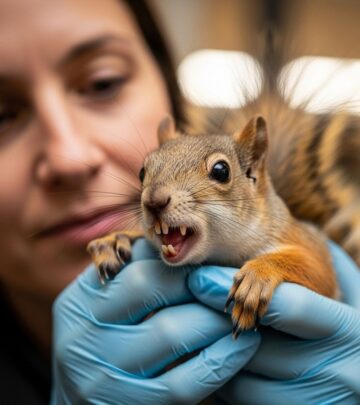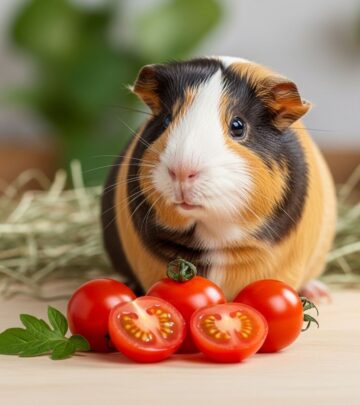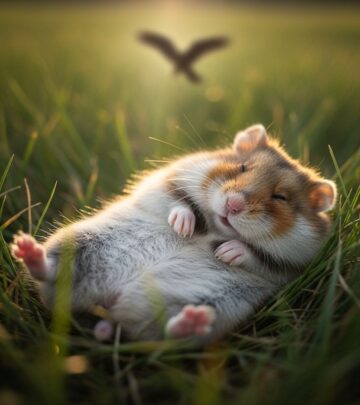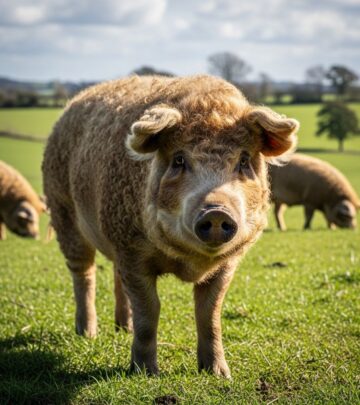Quoll Babies: Rare Glimpses Of Australia’s Spotty Marsupials
Born in secret pouches, tiny pups confront fierce challenges before ever seeing daylight.
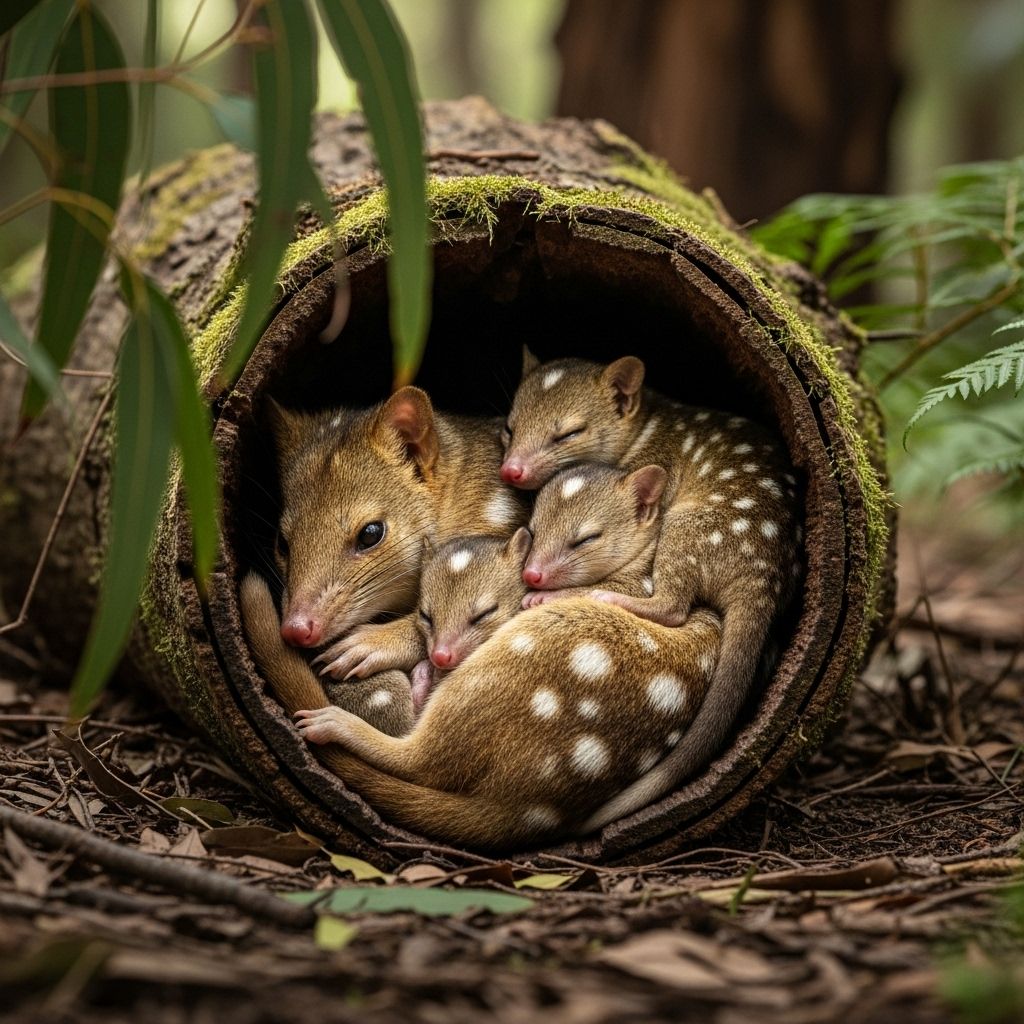
Quoll Babies: Australia’s Spotty Marvels
Among the hidden treasures of Australia’s wildlife, quoll babies stand out—not only for their adorable appearance but for their role in the story of survival and conservation. These carnivorous marsupials, distinguished by their spotty fur and pink noses, are rarely seen and even more rarely photographed, making every glimpse a celebration of one of nature’s rarities.
What Is a Quoll?
Quolls (Dasyurus) are small, agile carnivorous marsupials native to Australia and New Guinea. There are six recognized species, with four found on the Australian continent and two in New Guinea.
- Distinguished by white spots on their brown or black fur
- Possess sharp teeth and strong jaws for hunting small birds, mammals, reptiles, and insects
- Notably nocturnal and spend daylight hours in dens
- Species range from the diminutive northern quoll (about 300g) to the robust spotted-tailed quoll (up to 7kg)
- Solitary animals except during breeding
Quolls once thrived across much of Australia, but now most species exist in small, fragmented populations due to significant threats.
Quoll Species in Australia
| Species | Distinctive Traits | Conservation Status |
|---|---|---|
| Spotted-tailed/Tiger Quoll (D. maculatus) | Largest, white spots extend to tail | Near Threatened |
| Eastern Quoll (D. viverrinus) | No spots on tail, extinct on mainland | Endangered |
| Western Quoll (D. geoffroii) | Smaller, fawn fur, white spots | Near Threatened |
| Northern Quoll (D. hallucatus) | Smallest, red-brown fur, white back spots only | Endangered |
Each species is adapted to specific habitats—from the rainforests and rocky outcrops to the arid inland.
The Life of a Quoll Baby
Quoll babies, known as pups, are born after a brief gestation and spend their earliest weeks developing inside their mother’s pouch.
- Females can give birth to up to 30 tiny pups—blind, hairless, each smaller than a jellybean
- Only 6–7 will survive, limited by the number of teats available
- Pups grow rapidly, clinging to their mother as she hunts overnight
- After leaving the pouch, juveniles continue development in a safe den, hidden in hollow logs or rock crevices
Quoll babies are surprisingly fierce for their size, inheriting both their carnivorous instincts and their playful curiosity. Their distinctive spotty coats begin to emerge as they grow, a camouflage advantage in their complex habitats.
Spotting Quoll Babies: Why So Rare?
Despite their appeal, quoll babies are seldom seen in the wild. Their combination of elusive behavior and low population densities means that most Australians will never encounter one in person.
- Quolls are strictly nocturnal—almost never active during daylight
- Babies spend the early months hidden in maternal pouches and dens
- Fragmented populations further reduce sighting chances
- Spotty coats provide excellent camouflage in forest and rocky settings
This rarity makes photographs and firsthand accounts of quoll babies especially precious—each image is a glimpse into Australia’s living history.
The Cutest Marsupials You’ve Never Seen
Wildlife photographers and conservationists sometimes capture stunning images of quoll babies—showcasing their:
- Soft, thick fur with distinctive white spots
- Large, bright eyes and triangular faces
- Pink noses, well-developed canines
- Curious, playful mannerisms as they learn to hunt and climb trees
Many describe quoll pups as resembling tiny, spotty kittens—yet their predatory instincts and wild heritage set them apart from domestic animals.
Danger and Decline: The Quoll’s Fragile Future
Once widespread, most quoll species now face significant threats that have driven dramatic declines in numbers and range.
- Introduced predators: Feral cats, foxes, and dogs compete for food and prey on quoll pups and adults
- Toxic cane toads: Especially lethal to northern quolls, which die if they eat toads
- Habitat destruction: Logging, agriculture, and urban development reduce safe nesting sites and feeding areas
- Poison baiting: Indiscriminate baiting targeting pests often kills quolls as collateral damage
- Road mortality: Increasingly, roads intersect quoll territories, and many individuals are struck by vehicles
This confluence of threats has led to extinction of some species from mainland areas and a listing of all four Australian quolls as at risk.
Conservation: Saving the Spotty Wonders
Quoll conservation remains a top priority for Australian wildlife agencies.
- Captive breeding programs bolster population numbers and provide individuals for reintroduction into the wild
- Habitat restoration projects protect critical denning and feeding areas
- The removal or control of feral predators helps reduce predation on pups and adults
- Some quolls are being trained to avoid eating cane toads using taste aversion techniques
The public is urged to support these efforts—every photograph, scientific study, and share helps raise awareness for these unique marsupials.
Quoll Babies: Nature’s Hidden Gems
Among Australia’s mammals, quoll babies represent both wonder and warning. Their enduring beauty is matched by the fragility of their existence. For future generations to experience the delight of these spotty marvels, conservation action is vital, safeguarding quoll mothers, pups, and their forest home.
Quoll Baby Facts: Quick Reference
- Species count: 6 (4 in Australia, 2 in New Guinea)
- Size at birth: Around 0.5cm (smaller than a jellybean)
- Survivability: Limited by mother’s teats; 6–7 pups typically survive
- Development: Born blind and hairless; fur and spots develop in weeks
- Lifespan: 1–5 years, species dependent
- Main threats: Feral predators, cane toads, habitat loss, road mortality
- Conservation status: All Australian species threatened/endangered
Quoll Babies vs. Other Marsupial Young
| Marsupial | Size at Birth | Mother’s Care | Unique Traits |
|---|---|---|---|
| Quoll | 0.5 cm | Pouch (6–7 teats) | White spots on fur, carnivorous |
| Kangaroo | 2 cm | Pouch (1 baby) | Rapid hopping/locomotion |
| Koala | 2 cm | Pouch (~1 baby) | Specialized eucalyptus diet |
| Possum | 1–2 cm | Pouch (multiple) | Arboreal, prehensile tail |
This comparison highlights the special place quolls hold within Australia’s unique marsupial heritage—a rare, carnivorous lineage now at risk of vanishing.
Frequently Asked Questions (FAQs)
What do quoll babies eat?
In their first weeks, quoll babies feed exclusively on their mother’s milk; as they mature, they transition to solid foods such as insects, small mammals, and birds under supervision.
Where do quoll babies live?
Quoll babies spend early life in the mother’s pouch, later sheltered in dens—hollow logs, caves, or rock crevices—hidden from predators and disturbance.
Can you keep a quoll as a pet?
Quolls are protected wildlife and cannot be kept as pets in most areas. Their dietary needs, nocturnal habits, and conservation status make them unsuited to domestic life.
Why are quoll babies so rare?
Their nocturnal, solitary behavior and declining populations due to habitat loss, predators, and environmental threats mean that wild quoll babies are rarely seen or photographed.
How can I help quoll conservation?
Support conservation organizations, raise public awareness, and advocate for protection of native habitats. Responsible pet ownership and reporting sightings to local wildlife agencies also help.
See Also
- Eastern Quoll Recovery Programs
- Spotlight on Endangered Australian Mammals
- How Taste Aversion Saves Northern Quoll Pups
- Feral Cats and the Threat to Native Marsupials
Join the Conservation Effort
The future of quoll babies depends on public involvement, research, and continued habitat restoration. Each surviving pup holds the hope for a thriving ecosystem and a living legacy of Australia’s unique wildlife.
References
Read full bio of medha deb








